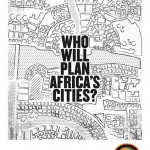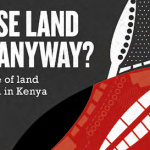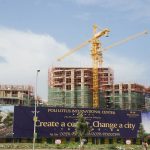As competition for land intensifies in Africa’s rapidly growing towns and cities, planning laws assume a fundamental importance. They determine how urban growth is managed and directed. In most countries outdated, inappropriate and unintegrated laws are exacerbating urban dysfunction.
The reform of planning law is frequently advocated as a necessary step for better management of urbanisation in Africa. But reform initiatives consistently founder. This is inevitable, given the approaches adopted. The promotion of “one-size-fits-all” and “model” planning laws from outside the continent has not served Africa well. Invariably it has created further legal uncertainty and a series of unanticipated, often pernicious consequences.
This Counterpoint argues that more progressive, realistic urban planning in Africa will require a radically different approach to planning law reform. This is essential for sustainable and equitable urban development in Africa.
Stephen Berrisford is an adjunct associate professor at the African Centre for Cities at the University of Cape Town and an independent consultant working in the field of planning law and policy.
National and local laws, collectively referred to as planning law, play a central role in shaping the economic, social and political life of towns and cities. They regulate land use and land development, provide a sound basis for infrastructure planning, secure the rights of investors, protect environmental resources and mitigate environmental risks. Crucially, planning law determines which buildings are legal and which are not.
Planning law has a poor record in Africa. Legislation designed to protect the public from the negative aspects of urban land development has all too often been used by the state to enhance the value of land owned by the wealthy – and to penalise and intimidate the disadvantaged. Laws to protect public spaces and facilities that enhance civic life are seldom implemented as intended. In a context of insecure and unpredictable land rights, planning law is a major fault line running through society.
Planning law is a major fault line running through society.
Planning law is meant to reflect and assert the public interest. This is not the reality in Africa. Land use is largely unregulated. Integrated infrastructure planning is rare. Private rights and interests are not mediated by a comprehensive legal framework.
Instead, dire living conditions, diabolical traffic jams, neglected infrastructure and dangerous public spaces are the norm. Urban management is notoriously erratic and fragmented, and the overwhelming majority of buildings are constructed in contravention of planning laws.
There are three principal indicators of failed planning law in urban centres:
- The predominance of illegal structures. For the majority of Africa’s urban dwellers the costs of complying with applicable planning, building and tenure laws are so out of kilter with their household incomes that legal compliance is unimaginable.
- The use of planning and building laws against vulnerable groups. Sudden crackdowns resulting in demolitions or evictions are commonplace. One of the best-known examples is Operation Murambatsvina, or “Drive Out the Rubbish”, carried out in Harare in 2005. The eviction of some 700,000 people in Zimbabwe’s capital and demolition of their homes was justified on the basis of the 1976 Town and Country Planning Act.
- Inviolate elites. Wealthy and powerful elites operate largely untroubled by planning laws. Any negative impacts on neighbours or the public interest are typically ignored. This culture of impunity has created the perception that there are two laws: one for the well-to-do and another for the rest.
The founding fathers of the town and country movement in Europe and North America envisaged the law being used to constitute and control the resource of developable urban land – and to ensure that towns and cities developed in ways that maximised the public benefit. In Africa, however, planning law was unashamedly used by colonial regimes to assert the interests of a small minority over those of the majority. This situation has endured since independence, albeit with a different minority elite reaping the benefits.
The grip of colonial legislation on the mind-sets of policymakers and practitioners remains strong. Political elites and government officials see themselves and the legal framework as a bastion against informality, illegality – and ultimately anarchy. Planning law is deliberately wielded in an exclusive, not inclusive, manner.
Land that can be developed within the formal legal framework is a scarce commodity in most African cities. This scarcity keeps prices high, accessible only to a small pool of elite landowners and wealthy individuals. In this context, planning laws form part of a regulatory barrier that limits opportunities in formal land markets and exacerbates inequality.
There is broad consensus that planning laws in Africa need to be changed. Laws designed to regulate urban development in Europe or North America in the early and mid 20th century are an inappropriate blueprint for contemporary Africa. Leading international urban development organisations including UN-Habitat, the World Bank and Cities Alliance are committed to legal reform.
For example, UN-Habitat reports have consistently called for the reform of planning laws as an “important precondition for more effective urban planning”. Although country after country has embarked on ambitious programmes of comprehensive legislative reform, consensus and concern have seldom been translated into successfully implemented new planning law.
A generally shared view is that reform should focus on cutting superfluous red tape and regulation. The objective of reducing the regulatory burden on weak systems with limited technical and financial resources is pragmatic. But it is too glib a solution to a complex problem. As with many calls for deregulation, so too with urban legal reform in Africa – over time more law is generated, not less. A seemingly irresistible impulse compels governments and their external advisers to use new law to respond to each of the multiple, complex challenges that cities face.
Legislation designed to protect the public from the negative aspects of urban land development has all too often been used by the state to enhance the value of land owned by the wealthy.
Wishful thinking abounds, based on the mistaken premise that planning is solely a technical exercise. This is not a good basis for law-making and it usually founders on exposure to one or more of the following:
- Misguided assumptions. Planners and legislators have over-ambitious or erroneous expectations of the officials who will be responsible for implementing the law. They fail to appraise the diverse economic and political motivations and interests of businesses, citizens and officials. In these circumstances, the interests of those drafting the legislation, or elites, invariably trump those of other intended beneficiaries – and social justice.
- Inadequate appraisal of costs and consequences. Disregard for the true costs of a reform is self-defeating. For example, only when a draft planning law in Uganda was nearing completion did it emerge that its implementation could require up to 20,000 additional public officials.1
- Unrealistic expectations of law reform. Implementation of planning law must take account of what is possible in the specific context. Initiatives to develop land-titling regulations are notorious for their disregard of the costs of compliance for affected households.
- Reality gap. There is a gap between what planners would like to see reflected in urban planning legislation and the reality of people’s lives in modern African cities. The planning vision is aspirational but invariably impossible to achieve on the scale demanded by rapidly growing urban areas. Many of the proponents of planning law reform seek to bring informal structures inhabited by the poor in line with regulatory standards. This results in the imposition of an administrative burden on those least able to bear it, often with negligible public interest benefit. Scant attention is paid to the regulation of powerful players, such as developers, commercial farmers, traditional leaders and wealthy citizens.
Planning law reform is difficult in any context anywhere in the world. Myriad competing interests need to be identified and balanced. Flawed design and drafting invariably consolidates existing privilege and enhances political and economic inequality. To harness the redistributive potential of planning law, policymakers and practitioners must address the typical shortcomings in reform processes. If they do not, ongoing attempts to update or even transform planning laws are unlikely to succeed.
The notion prevails that legislation employed successfully elsewhere can be adopted in Africa with minimal amendment, quickly and with similar results. This has been a further impediment to effective, progressive reform. In the late 1940s, the British Colonial Office developed a model town and country planning law for use across Africa and the Caribbean.2 In Patrick McAuslan’s words, in Africa this has “been used in country after country to keep the urban masses at bay; to deny them lawful homes and livelihoods; to reinforce the powers of officials; and to weaken the institutions of civil society”.3
No matter how appealing the idea, there are no easy or one-size-fits-all solutions to the reform of planning law. It must be carried out in accordance with local conditions and practices. African countries have diverse law-making and planning practices, which reflect their different histories, as well as their present-day economic, social and political realities. There are disparate, complex underlying land tenure arrangements to consider. No model law can be equally appropriate and effective in Malawi, Angola and Burkina Faso, for example.
The imperative is to identify workable alternative approaches to planning law reform that enable more equitable urban development in sub-Saharan Africa. The universal failure of model solutions poses two important questions. Firstly, what constitutes an effective planning law? Secondly, why has it been so difficult to design new but appropriate planning laws in Africa?
Effective planning law must be practical. It is no good drafting a law that appears to address a wide range of concerns yet cannot be implemented. Many of the efforts to write new planning law for African countries are dead in the water because of this failure – as is often quietly, if sheepishly, acknowledged by those involved in the design and drafting.
Although the record of planning law reform is poor across the board, with very few examples of good practice to emulate, reform processes can be improved. But to achieve more efficient lawmaking – and laws – the way that new planning laws are conceived, drafted and implemented has to change. New legislative interventions need to be crafted more intelligently, and with due regard for the interests of the majority of those affected – the urban poor.
The most important fact when seeking to identify what might bring about positive change is that citizens – in households and businesses – determine the characteristics and growth of African cities. Inevitably, they do this inefficiently and, in most places, inequitably and unsustainably. But they are creating the dynamism and innovation that characterise urban centres the world over. The primary objective for urban planning and other laws must be to influence these patterns of investment and activity in such a way as to achieve better overall development outcomes for cities and towns.
The grip of colonial legislation on the mind-sets of policymakers and practitioners remains strong.
A first step is to identify the conditions that are conducive to achieving better results, rather than simply stating the desired outcome, either expressly or by implication. For example, we should examine what could facilitate a form of land development in urban centres that is less concerned with protecting elite interests and more in line with broader needs and interests. This would be more likely to achieve long-term success than a blithe insistence that a particular method must be followed.
To determine what is possible, the competing interests and concerns of all groups must be properly understood. The urban population as a whole needs to be presented with, accept and follow the rationale behind planning legislation that affects their day-to-day lives. Conditions that enable the authorities – officials and politicians – to implement legislation with realism and sensitivity to the impact of their actions on communities and livelihoods are vital.
Popular participation and consultation in planning reform is frequently a sham. In a context of high social inequality, political and economic elites dominate the lawmaking process. Strong civil society organisations can play an important role in mitigating this imbalance. They can exert influence and assert rights to make decision-makers more cognisant of the limits of their powers and more accountable to the general public.
There is a gap between what planners would like reflected in urban planning legislation and the reality of people’s lives in modern African cities.
This can be done either through the courts or through administrative processes. Among many others, the Social and Economic Rights Centre (SERAC) in Nigeria, the Social and Economic Rights Institute of South Africa (SERI), the Zambia Land Alliance and Shack/Slum Dwellers International (SDI) have all achieved successes which provide grounds for optimism – and emulation.
The emphasis should be on what can be done rather than what should not be done. A legal framework that protects the power of a municipality to levy user charges for service provision is a more useful measure than a set of regulatory hurdles that have to be cleared before a new home can be built. Obviously, compromises and balances must be struck, but it is essential to highlight what is allowed rather than what is prohibited. South Africa’s landmark Development Facilitation Act 67 of 1995 is an example of an attempt to make this shift, albeit one stymied by subsequent constitutional challenge.4
There should be a focus on the minimum standards needed to secure a basic level of health and safety. The appearance of buildings, even the building materials used, is generally irrelevant to achieving these standards and draconian regulations give rise to costs that households and businesses cannot afford.
More inclusive, just and economically productive urban centres cannot be created by new legislation alone. There needs to be a shift in the mind-sets of the officials responsible for implementing urban legislation in African countries. Officials are influenced by a mix of international, professional and legal pressures, which must be taken into account by planning law reformers.
Many of the visions and ideals that influence planners and officials in African cities are foreign. They are predicated on notions of what constitutes a city and how a city operates that too often are wholly divorced from the realities of urban life and governance in, for example, Luanda or Addis Ababa. Yet the force of these international models sweeps all before it – an insidious and unhelpful phenomenon.
This force is apparent in at least two important areas. Firstly, in the concept of a compact, contained city clearly defined by an urban edge. Secondly, in the prominent role of large-scale infrastructure projects, especially road networks. As a result, we increasingly see planning law used to criminalise informal land development beyond the urban edge and to clear land for the development of mega-infrastructure. This further constrains the opportunities for formal and legal land development, while destroying the homes and businesses of people who are unlucky enough to reside on land allocated to a new bypass.
All the key personnel in the urban legal system in Africa feel the cumulative effect of international and domestic pressures, both in their conception of what would constitute better new law and in their approach to changing the law. In almost all cases, these pressures hamper a realistic and practical approach to problem-solving and lead to negative outcomes.
The temptation to rewrite planning laws is seductive. However, it promises the opportunity to change a great deal more than is actually feasible. It is – at least in theory – a chance to redesign the planning system and reimagine how towns and cities could look, feel and work. But a wholesale rewriting of complex legislation is not realistic – and probably not desirable.
What is required is a more sanguine approach that leads to better understanding of the underlying conditions that make urban legal reform so difficult in African countries. Such an approach must take into account the interests of all parties, and the prospects and costs for implementation of legislation. Positive change depends on a sober assessment of what is realistic and practical. This can only be gained by asking what laws obstruct such change – and by bringing about shifts in deep-seated attitudes.
There are no easy or one-size-fits-all solutions to reforming planning law.
Fundamental changes in approach cannot be prescribed. They have to emerge and be grounded in the motives and interests of urban populations, the private sector, municipal authorities and donor organisations. This takes time. It is salutary to look at the example of the Brazilian City Statute, the product of 30 years of effort yet inevitably still imperfect.
A number of initiatives supporting a change of approach have been launched. In July 2012, at the first meeting of the Platform for Urban Law Reform in sub-Saharan Africa, a group of planning and legal experts from across the continent agreed to start work on a long-term strategy to bring about urban and planning law reform. In partnership with UN-Habitat, the conclusions of this meeting were presented to the World Urban Forum in Naples in September 2012. A model course for planning law at African planning schools has been drafted. A new African Urban Research Initiative, supported by the African Centre for Cities, the Rockefeller Foundation and Cities Alliance, was inaugurated in Addis Ababa in March 2013. An Urban Legal Guide is in preparation.5
It would, of course, be as hazardous to propose a model approach to planning law reform as to adhere to a model planning law. However, closer observance of certain basic rules of good regulation in drafting processes would be helpful. These include proportionality, accountability, consistency, transparency and targeting. Introducing these rules into urban legal reform will probably make the processes longer and more costly, but it will greatly improve the likelihood of establishing more workable legislation at the end.
In addition to the promotion of a more pragmatic approach to urban legal reform in Africa, the conditions that would make such an approach work need to be created and strengthened. This imperative has at least three dimensions. Firstly, it is about building capacity and awareness of what law and law reform can achieve. From the outset, due attention should be paid to the design of law reform processes that recognise the realities of implementation and compliance.
Secondly, it is about changing the urban planning discourses. Planning alone is not going to solve the problems of African cities. International agencies such as UN-Habitat and Cities Alliance, major bilateral doors, and international and regional professional associations need to assist in restraining unrealistic expectations for planning. Similarly, they should promote non-planning measures that can have significantly greater impact. These include municipal finance, especially in relation to infrastructure investment, and land tenure reforms, both in relation to securing formal land rights and recognising informal ones.
More inclusive, just and economically productive urban centres cannot be created by new legislation alone.
Finally, the conditions that allow civil society organisations to engage with urban development and planning issues constructively and coherently need to be fostered. Ideas and suggestions must be debated and absorbed – and state actors held to account. If future urban strategy and policy documents pay more attention to the creation of these conditions than to matching a list of urban horrors to a parallel to-do list of interventions, then we will start to see the outlook for effective urban legal reform improve.
NOTES
1 McAuslan, Patrick, Land Law Reform in East Africa: Traditional or Transformative?, Routledge, 2013, p.89
2 McAuslan, Patrick, Bringing the Law Back in: Essays in Law and Development, Ashgate, 2003, p.92
3 Ibid., p.103
4 The Act provided extraordinary measures to facilitate and speed up the implementation of reconstruction and development programmes and projects in relation to land; but Chapters V and VI were invalidated in 2010 after a successful challenge brought by the City of Johannesburg regarding the division of powers between municipal and provincial authorities.
5 Authored by Patrick McAuslan and Stephen Berrisford, initiated by the African Centre for Cities at the University of Cape Town and funded by Urban LandMark, Cities Alliance and UN-Habitat.













